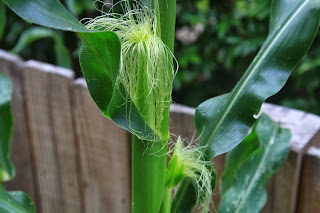My grandmother had Hydrangeas all down one side of her semi out in Blair Street Bondi. They are a very old-fashioned flower, dare I say, an out-of-fashion flower. However, Kirsten's father gave her a vase full, and she liked them. Mainly, she liked them because as a cut flower they lasted, with minimal degradation for well-nigh three weeks. So I bought some
online. Well, I actually bought two examples each of seven varieties, pretty much across the colour spectrum. But each is a mophead.
I did not know that there are two distinct plants in the Hydranges macrophylla genus, a mophead, and a lacecap. I gather the mophead is the common (garden) variety. If I can preserve this lot of 14 plants from the possums down the back, I might invest in a couple of lacecaps in a season or two. At the moment, the back garden has an interesting floral flush during the cooler months. We start off in June-August with half a dozen camellias (all japonicas).Which reminds me, I must work towards eradicating the webbing spiders on the camellias. Then, we swing into mix of orange and creme Cliveas during August, and September, and then a try at Agapanthus, which is not working due to poor conditions and lack of attention. A splash from a row of Hydrangeas will take the back garden all the way through Christmas.
 |
The hydrangea came as 'tubestock', so called, I guess, because they come in ... tubes. Duh! Anyway, damned useful devices are these tubes. I currently have three January tomatoes getting their act together in them, and I intend to strike cauliflower and broccoli seeds in them at the end of December. But I digress ...
To all the floral flush discussed above, add the alternating of 'crystal palace' Lobelia with mixed marigolds, in the semi-circular garden atop the rockery, and I have a PLAN!




















